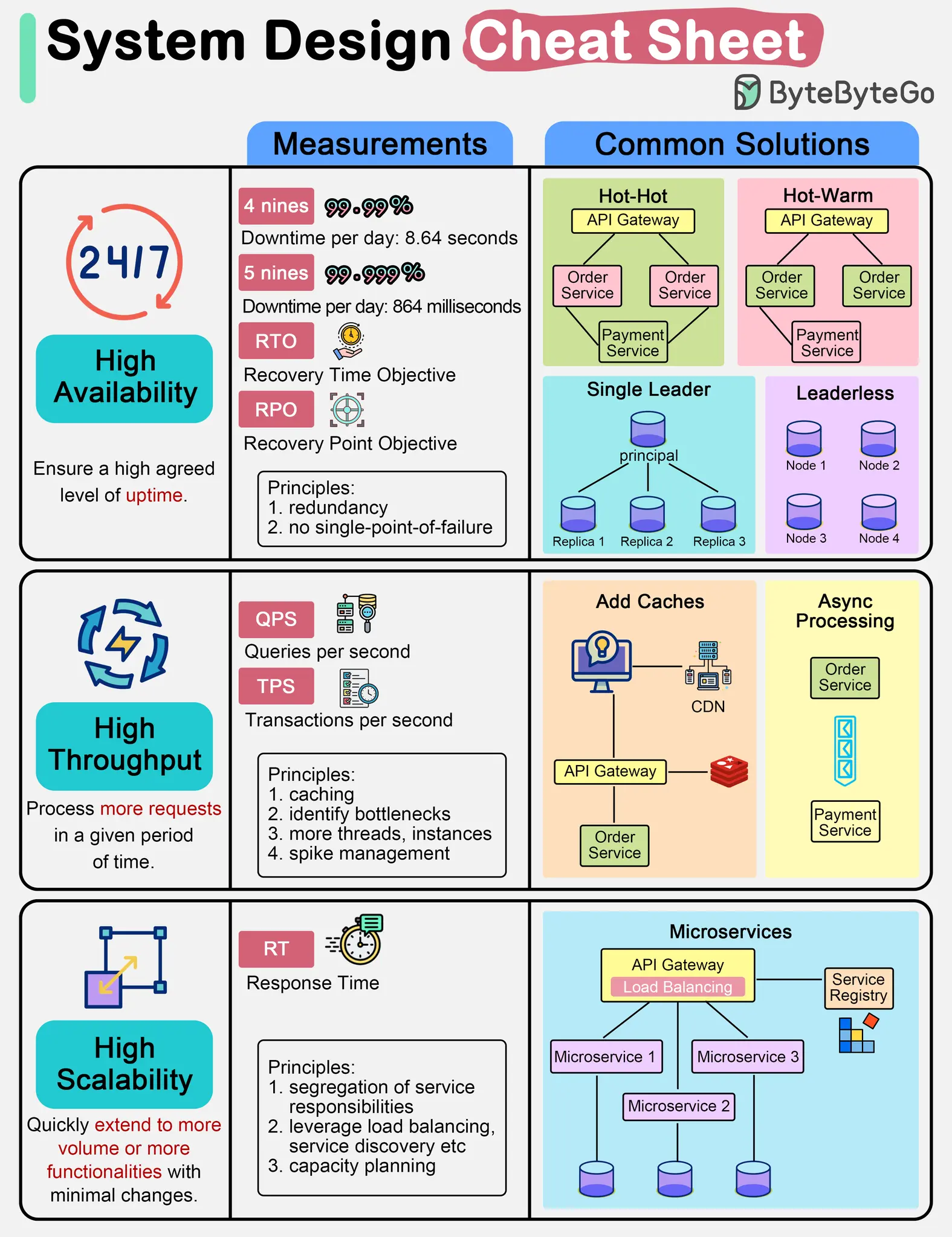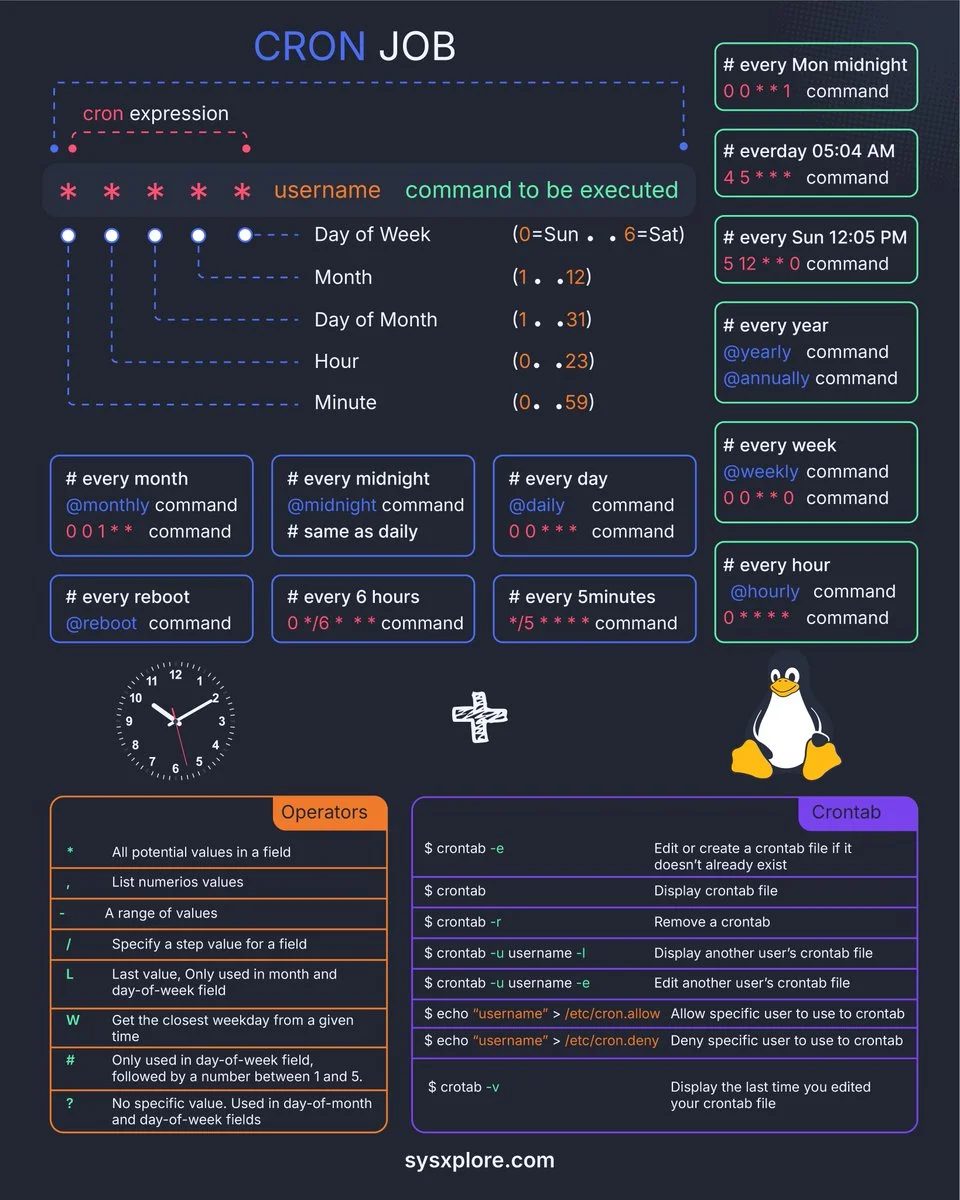一图胜千言
1 - Git
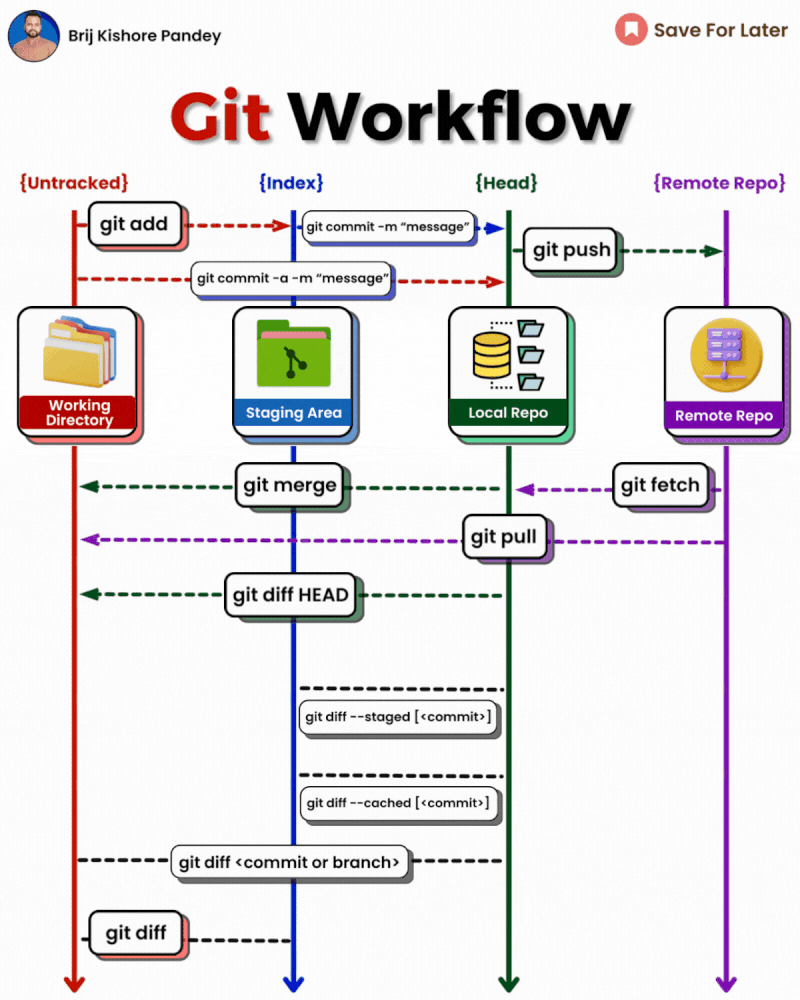
𝗴𝗶𝘁 𝗱𝗶𝗳𝗳: Show file differences not yet staged.𝗴𝗶𝘁 𝗰𝗼𝗺𝗺𝗶𝘁-𝗮 -𝗺 "𝗰𝗼𝗺𝗺𝗶𝘁 𝗺𝗲𝘀𝘀𝗮𝗴𝗲": Commit all tracked changes with a message.𝗴𝗶𝘁 𝘀𝘁𝗮𝘁𝘂𝘀: Show the state of your working directory.𝗴𝗶𝘁 𝗮𝗱𝗱𝗳𝗶𝗹𝗲_𝗽𝗮𝘁𝗵:Add file(s) to the staging area.𝗴𝗶𝘁 𝗰𝗵𝗲𝗰𝗸𝗼𝘂𝘁-𝗯 𝗯𝗿𝗮𝗻𝗰𝗵_𝗻𝗮𝗺𝗲: Create and switch to a new branch.𝗴𝗶𝘁 𝗰𝗵𝗲𝗰𝗸𝗼𝘂𝘁𝗯𝗿𝗮𝗻𝗰𝗵_𝗻𝗮𝗺𝗲: Switch to an existing branch.𝗴𝗶𝘁 𝗰𝗼𝗺𝗺𝗶𝘁–𝗮𝗺𝗲𝗻𝗱:Modify the last commit.𝗴𝗶𝘁 𝗽𝘂𝘀𝗵𝗼𝗿𝗶𝗴𝗶𝗻 𝗯𝗿𝗮𝗻𝗰𝗵_𝗻𝗮𝗺𝗲: Push a branch to a remote.𝗴𝗶𝘁 𝗽𝘂𝗹𝗹: Fetch and merge remote changes.𝗴𝗶𝘁 𝗿𝗲𝗯𝗮𝘀𝗲-𝗶: Rebase interactively, rewrite commit history.𝗴𝗶𝘁 𝗰𝗹𝗼𝗻𝗲: Create a local copy of a remote repo.𝗴𝗶𝘁 𝗺𝗲𝗿𝗴𝗲: Merge branches together.𝗴𝗶𝘁 𝗹𝗼𝗴–𝘀𝘁𝗮𝘁: Show commit logs with stats.𝗴𝗶𝘁 𝘀𝘁𝗮𝘀𝗵: Stash changes for later.𝗴𝗶𝘁 𝘀𝘁𝗮𝘀𝗵𝗽𝗼𝗽: Apply and remove stashed changes.𝗴𝗶𝘁 𝘀𝗵𝗼𝘄𝗰𝗼𝗺𝗺𝗶𝘁_𝗶𝗱: Show details about a commit.𝗴𝗶𝘁 𝗿𝗲𝘀𝗲𝘁𝗛𝗘𝗔𝗗~𝟭: Undo the last commit, preserving changes locally.𝗴𝗶𝘁 𝗳𝗼𝗿𝗺𝗮𝘁-𝗽𝗮𝘁𝗰𝗵 -𝟭 𝗰𝗼𝗺𝗺𝗶𝘁_𝗶𝗱: Create a patch file for a specific commit.𝗴𝗶𝘁 𝗮𝗽𝗽𝗹𝘆𝗽𝗮𝘁𝗰𝗵_𝗳𝗶𝗹𝗲_𝗻𝗮𝗺𝗲: Apply changes from a patch file.𝗴𝗶𝘁 𝗯𝗿𝗮𝗻𝗰𝗵-𝗗 𝗯𝗿𝗮𝗻𝗰𝗵_𝗻𝗮𝗺𝗲: Delete a branch forcefully.𝗴𝗶𝘁 𝗿𝗲𝘀𝗲𝘁: Undo commits by moving branch reference.𝗴𝗶𝘁 𝗿𝗲𝘃𝗲𝗿𝘁: Undo commits by creating a new commit.𝗴𝗶𝘁 𝗰𝗵𝗲𝗿𝗿𝘆-𝗽𝗶𝗰𝗸 𝗰𝗼𝗺𝗺𝗶𝘁_𝗶𝗱: Apply changes from a specific commit.𝗴𝗶𝘁 𝗯𝗿𝗮𝗻𝗰𝗵: Lists branches.𝗴𝗶𝘁 𝗿𝗲𝘀𝗲𝘁 --𝗵𝗮𝗿𝗱: Resets everything to a previous commit, erasing all uncommitted changes
2 - Latency Numbers Every Programmer Should Know
在线预览地址:Latency Numbers Every Programmer Should Know
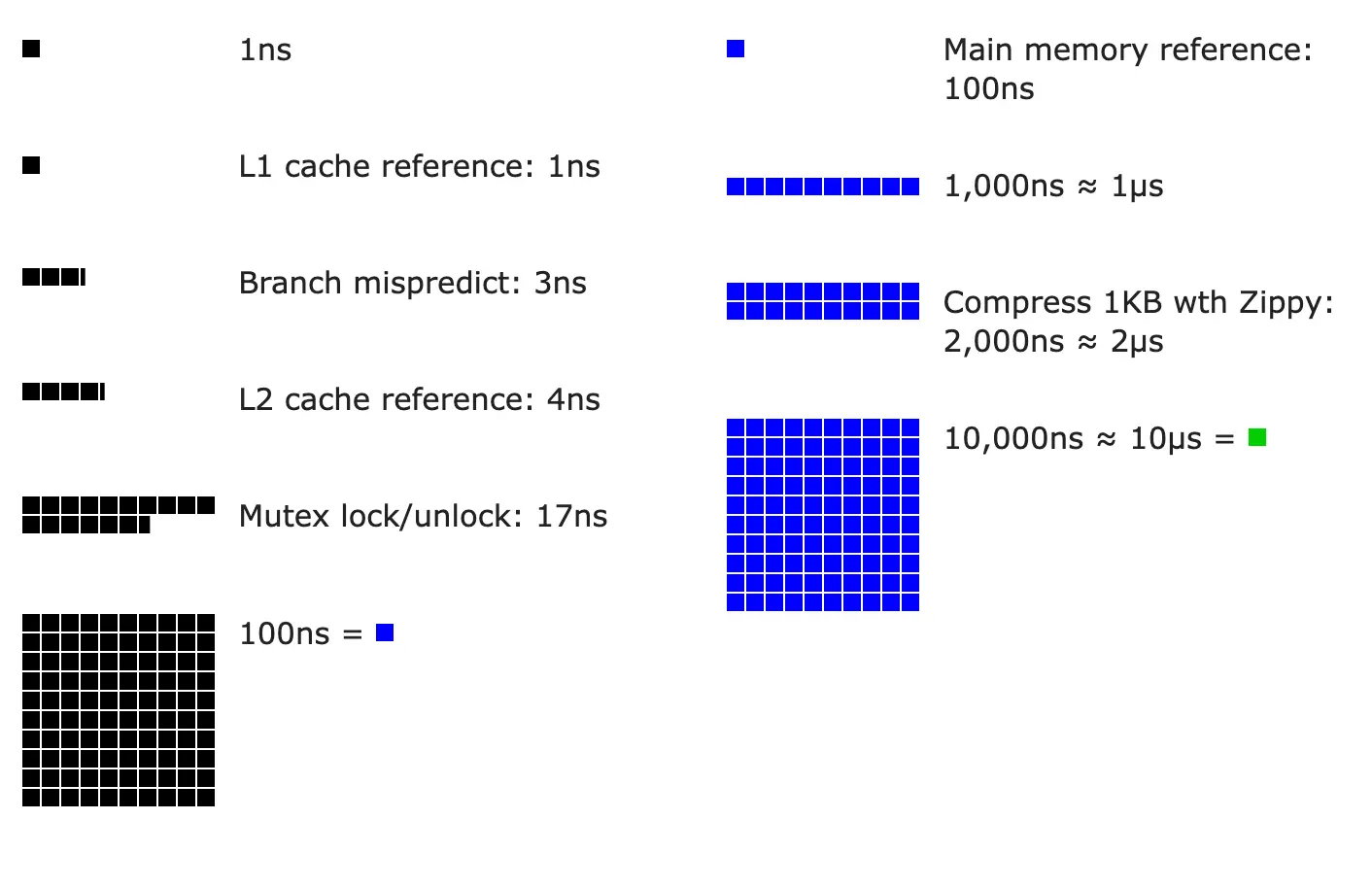
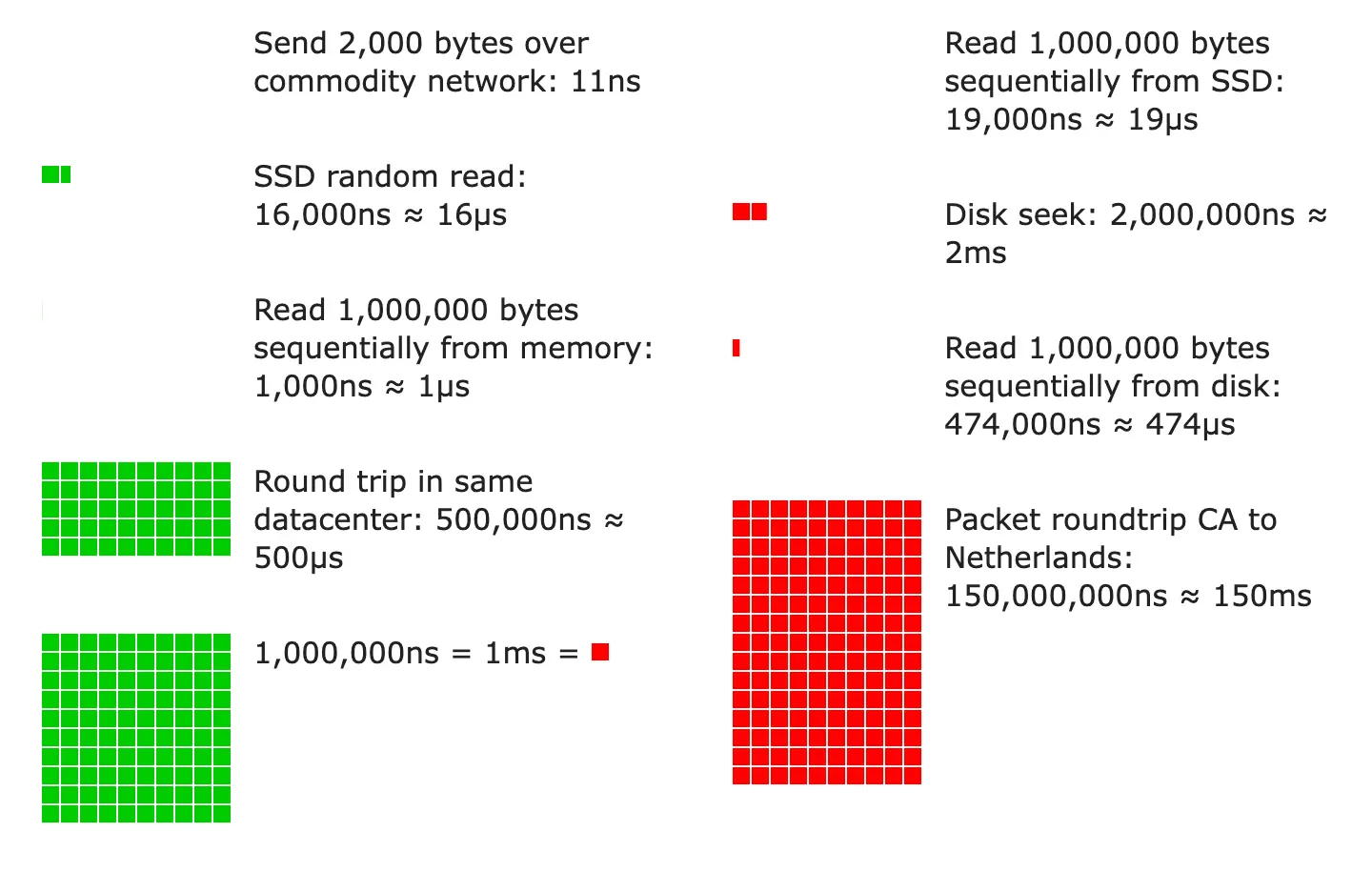
From Google SRE book
| Operation | Time in ns | Time in ms (1ms = 1,000,000 ns) |
|---|---|---|
| L1 cache reference | 1 | |
| Branch misprediction | 3 | |
| L2 cache reference | 4 | |
| Mutex lock/unlock | 17 | |
| Main memory reference | 100 | |
| Compress 1 kB with Zippy | 2,000 | 0.002 |
| Read 1 MB sequentially from memory | 10,000 | 0.010 |
| Send 2 kB over 10 Gbps network | 1,600 | 0.0016 |
| SSD 4kB Random Read | 20,000 | 0.020 |
| Read 1 MB sequentially from SSD | 1,000,000 | 1 |
| Round trip within same datacenter | 500,000 | 0.5 |
| Read 1 MB sequentially from disk | 5,000,000 | 5 |
| Read 1 MB sequentially from 1Gbps network | 10,000,000 | 10 |
| Disk seek | 10,000,000 | 10 |
| TCP packet round trip between continents | 150,000,000 | 150 |
Therefore, it is possible to read:
- sequentially from HDD at a rate of ~200MB per second
- sequentially from SSD at a rate of ~1 GB per second
- sequentially from main memory at a rate of ~100GB per second (burst rate)
- sequentially from 10Gbps Ethernet at a rate of ~1000MB per second
Back of the Envelope Calculations
Quick tips: Use numbers based on the decimal system to run numbers in your head. Sample calculation:
- What is the overall latency of retrieving 30 256kB images from one server?
Naïve design: do all the work on one machine - dominated by disk seek time.
| Reads required to generate page | 30 images / 2 disks per machine = 15 |
| Time to read one image from HDD | (256KB / 1MB) * 5 ms + 10 ms seek = 11.28 ms |
| Approximate time to generate results | 15 reads * 11.28 ms = 169.2 ms |
One HDD-based server can generate 1000 ms / 169.2 ms ~= 5 result pages per second.
3 - Kafka
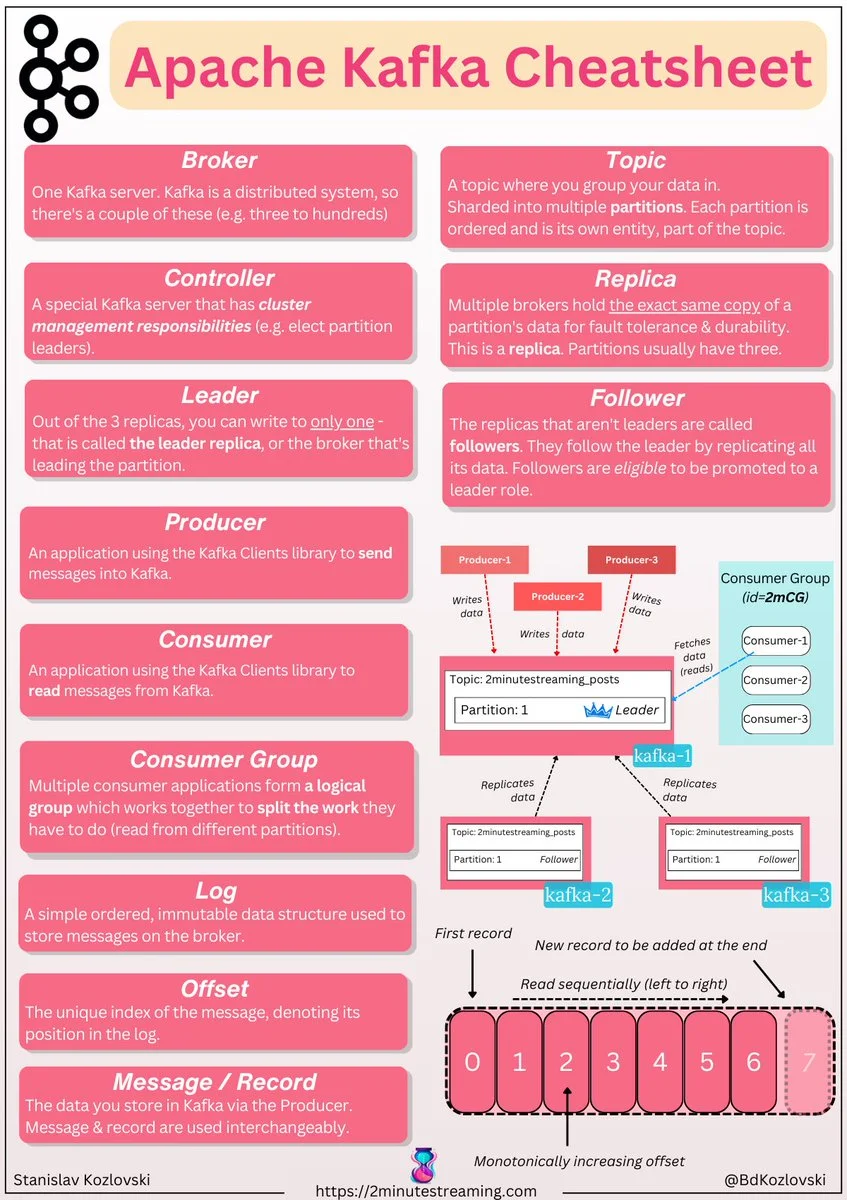
4 - Web authorization
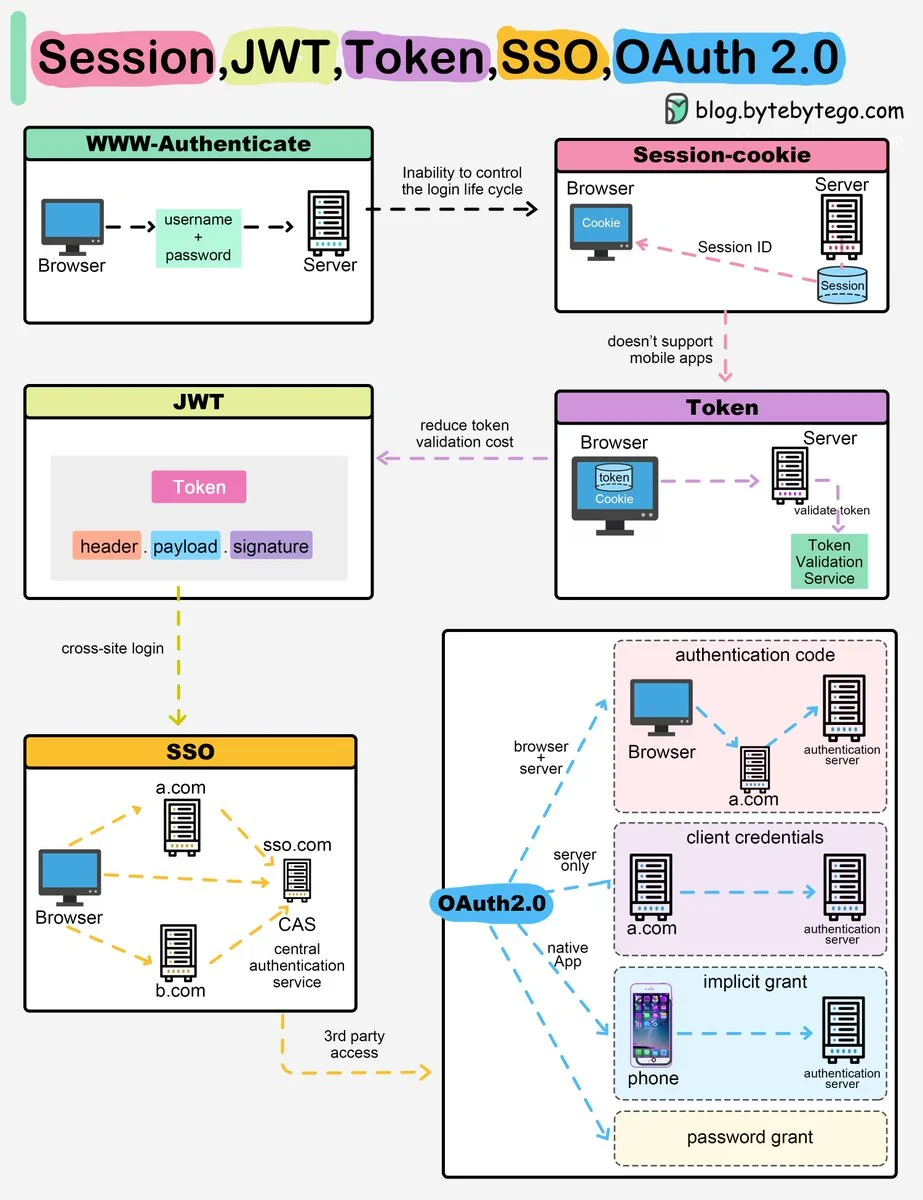
5 - Memory allocation

